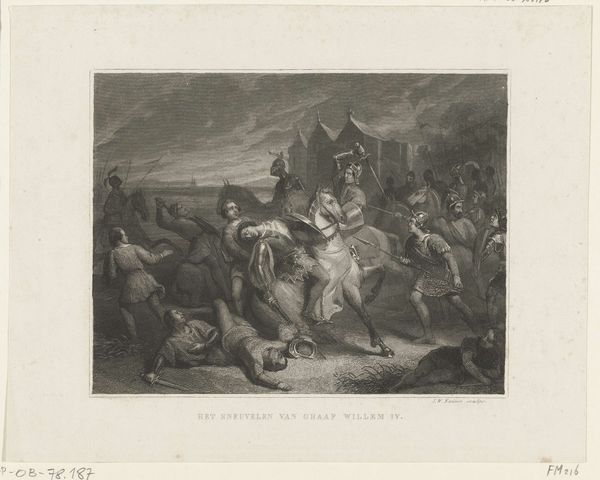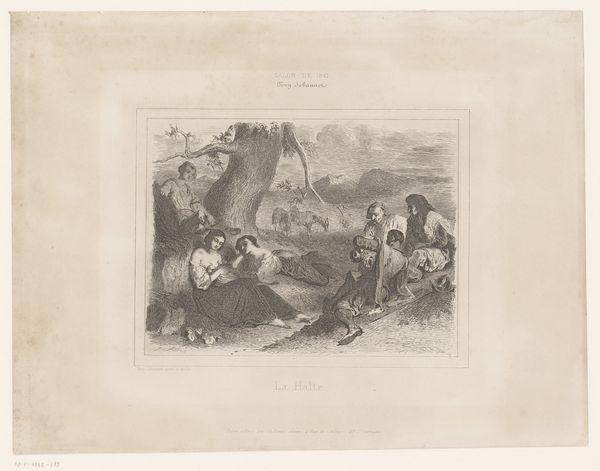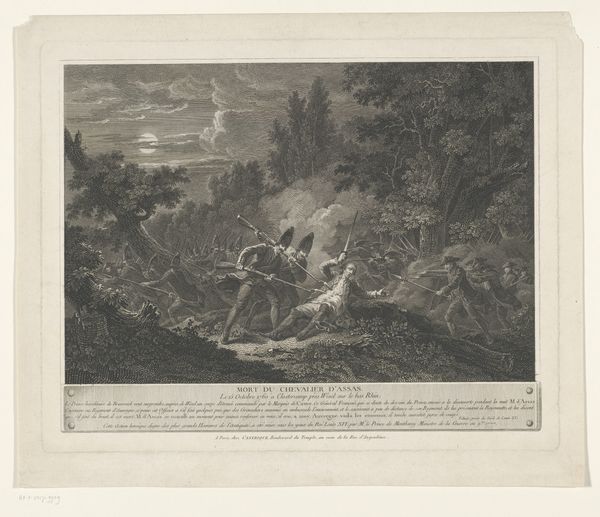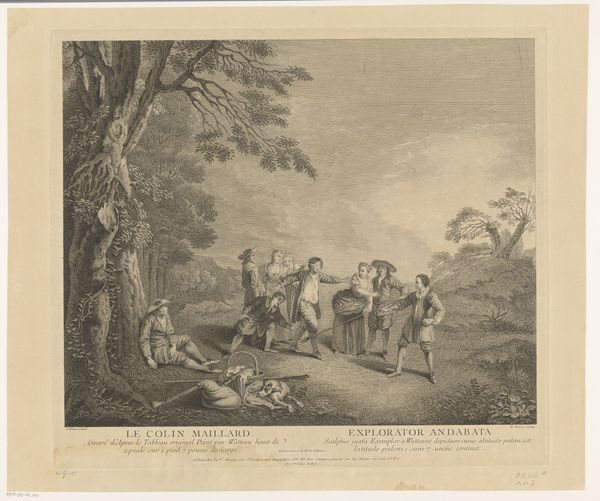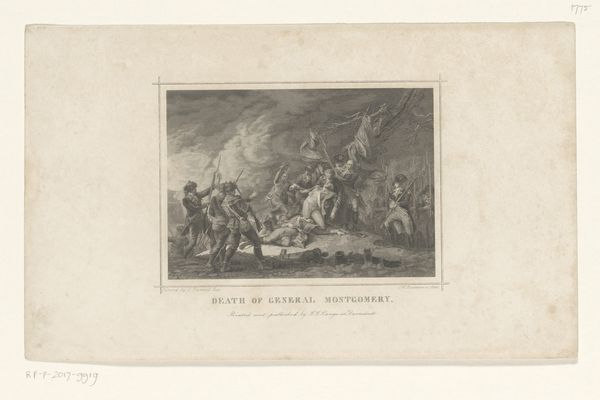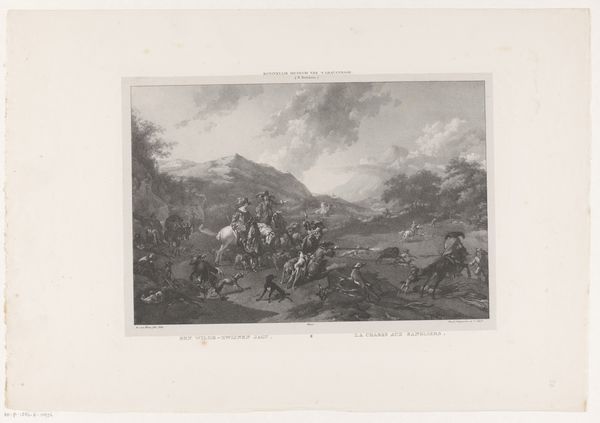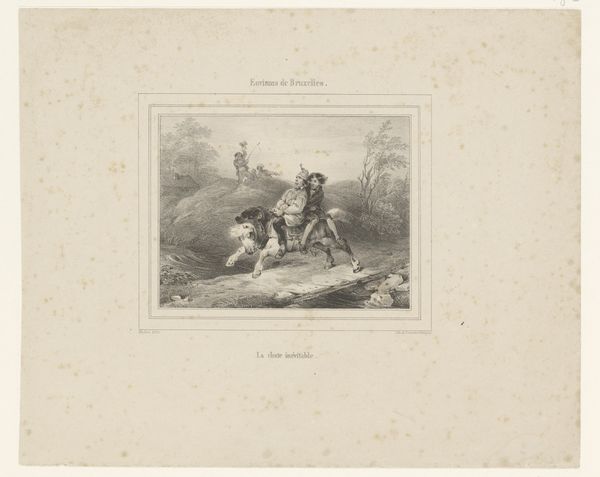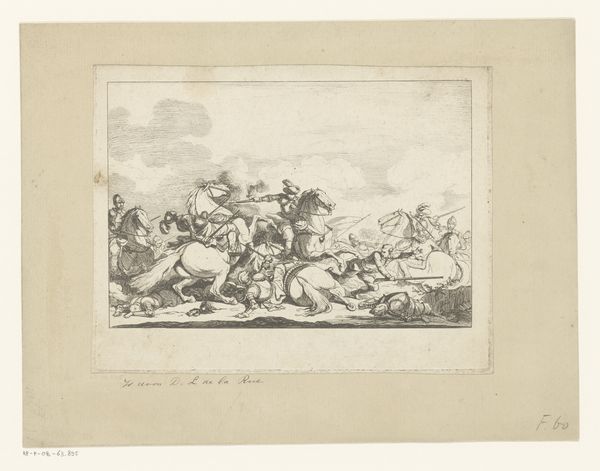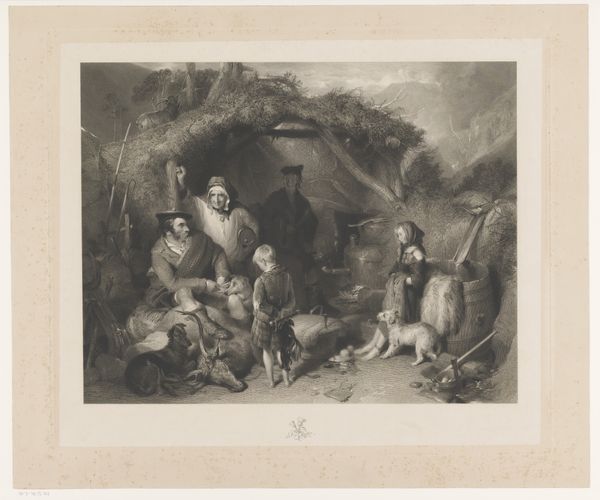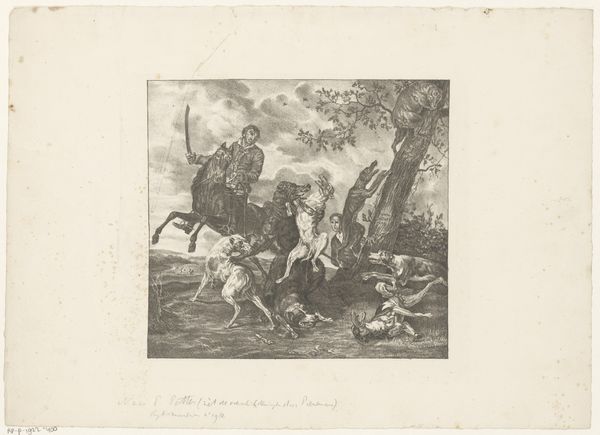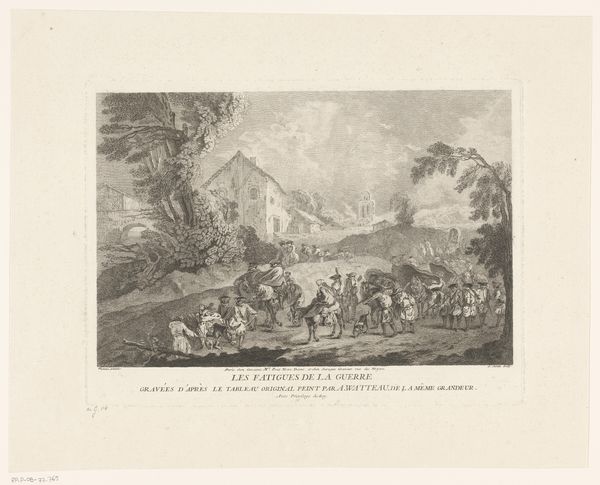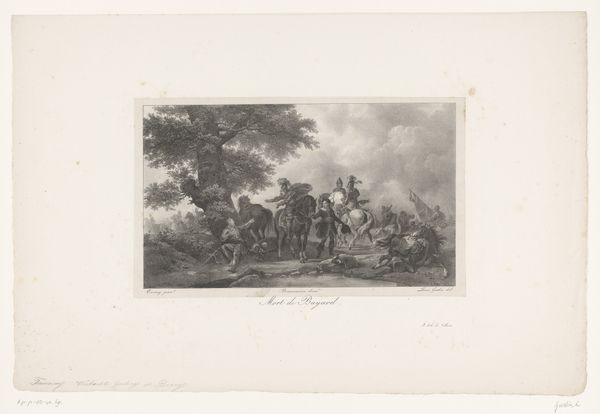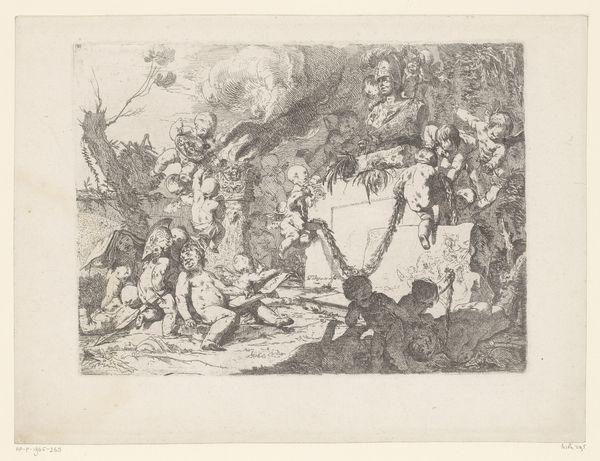
print, engraving
#
narrative-art
# print
#
landscape
#
romanticism
#
history-painting
#
academic-art
#
engraving
#
monochrome
Dimensions: height 305 mm, width 400 mm
Copyright: Rijks Museum: Open Domain
Curator: What a dramatic scene! This engraving, created by F. Randel in 1838, is titled "Roofoverval". Editor: That title certainly fits. Immediately I feel this intense, unsettling energy, like a film still ripped from some grand historical drama. It has this old-world tension. Curator: The scene depicts an ambush, a clash unfolding amidst a seemingly peaceful landscape. The artist employs very sharp details. Considering the piece, this feels like a Romantic era attempt to capture a key historical or literary moment. Editor: Definitely. It's that whole Romantic fascination with dramatic history and exotic settings, right? It's like they’re turning real life into theatre, staging an epic event within what could otherwise be a pretty travel poster landscape. Notice how this piece is almost entirely black and white? What sort of impact do you think this has on the viewing experience? Curator: The monochromatic palette throws the action into stark relief. I think, to that point, without colour to distract us, we see an exaggeration of good versus evil playing out before our eyes. Consider the light catching the swords and guns...symbolising force. Also note how people are shown in this moment in life with those in distress near death in the background? This evokes the symbol of power and triumph. Editor: Exactly! The stark contrasts ramp up the drama and let the violence really sink in. It really invites that "Us vs. Them" binary in classic Romantic fashion. Looking at the victims, one is slumped almost over the corner of what looks to be a fountain. Can fountains be harbingers of death in our art too? Curator: A powerful symbolic image! Fountains typically symbolize life, abundance, renewal. Its presence next to the slumped victim intensifies the scene’s irony and tragedy. The defilement of a life-giving symbol heightens the sense of loss. Editor: So, even within its historical context, this piece seems to speak to a primal struggle, one that remains potent even now. It's almost unnerving how little things have changed. Curator: Absolutely, history echoes in these visual patterns and our memory is provoked in seeing them. An engraving becomes a vessel carrying familiar struggles across time. Editor: Indeed, giving us a somber moment to reflect on the enduring echoes of human conflict.
Comments
No comments
Be the first to comment and join the conversation on the ultimate creative platform.
